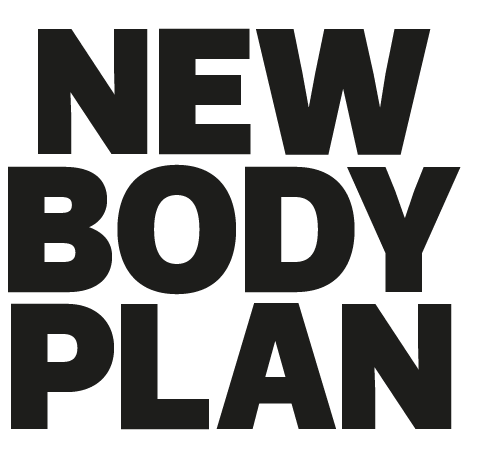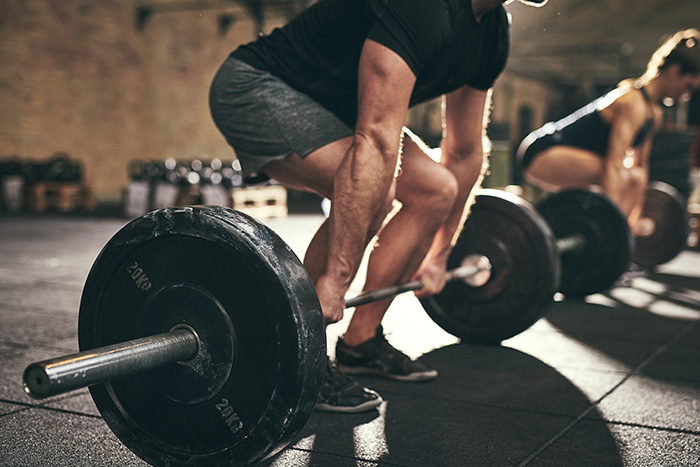Add muscle size, strength and definition with our guide to weight training
Build the bigger, stronger and more defined physique you’ve always wanted with the New Body Plan guide complete to weight training. Inside the guide you’ll find everything you need to know to start sculpting the impressive and athletic physique you want as quickly as possible, says New Body Plan fitness editor Joe Warner
This guide is your complete overview of the most important weight-training equipment that are the foundations of all good fat-loss and muscle-building training programmes, such as New Body Plan.
We break down each bit of kit, explain why you should use it, the main lifts you can do with it, and the other key need-to-know factors that will help you lift weights better.
Why’s that so important? Because they greater your weight-training knowledge and the better you can lift weights effectively and safely, the faster you’ll build a bigger, stronger and leaner body!
Guide to weight training contents
Bodyweight training
Barbell weight training
Dumbbell weight training
Resistance machine weight training
Cable machine weight training
Find your perfect fat-loss plan!
Take the New Body quiz!
Body weight training
Body weight training moves – and this should come as no surprise – use your own weight as resistance to work your muscles. And because no kit is needed their big advantage is that they can be done anywhere and at anytime.
How much you weigh determines how much you lift. Bodyweight moves can range from the relatively easy. These moves include crunches and bicycles for your abs, where you only lift a limited percentage of your total weight. But some are incredibly challenging. Pull-ups, triceps dips or burpees, in which you move all of your bodyweight.
Despite a perception problem they’re “too easy” to be effective for advanced trainees, bodyweight moves should feature in all training plans. Why? Because they work multiple muscle groups, strengthen joints and connective tissue, improve movement patterns, mobility and flexibility. And they can be done in a heart-rate-raising circuit for rapid fat-loss.
Bodyweight exercises
Press-ups are the classic bodyweight move for your chest, triceps and front shoulders. You can adjust the difficulty of the move by changing body position. Elevate your hands (to reduce the amount of bodyweight lifted, making the exercise easier). Or elevate your feet (to increase the amount of bodyweight lifted, making it harder).
Pull-ups and triceps dips are two of the hardest bodyweight moves. That’s because they require you to lift and lower your entire bodyweight. But the difficulty can also be adjusted. For example, you can use an assistance machine to offset some of your weight to make them easier. Or do them with a belt attached to a weight plate or dumbbell to make them harder.
The best body weight training moves
• Press-up
• Squat
• Pull-up
Pros
• Can be done anywhere and anytime
• Works minor as well as major muscles
• Great for beginners to master movements
• Great for more advanced trainees to fully fatigue muscles safely
Cons
• Can only lift as heavy as your own weight
• Can be hard to target back and biceps muscles
• Need to increase resistance to make progress
Barbell weight training
All good gyms have barbells, and they come in two main varieties. Olympic bars, and regular or fixed barbells. An Olympic barbell is 7ft long (2.13m) long and weighs 20kg. Fixed bars are nearly always shorter and “pre-loaded” with a set weight that can’t be adjusted.
Olympic barbells are therefore the best option for when doing barbell exercise. And the middle section of these bars (the part you grip) has a “knurled” surface. This permits a very secure grip. Each end also revolves, which allows the weight plates to rotate as you lift and lower the bar. This reduces the stress on your wrist and elbow joints, which isn’t the case with fixed barbells.
The biggest problem with Olympic barbells is that most gyms only have a limited number of them. And that can cause delays to your workout.
Barbell weight training exercises
Barbells are most suited to compound, or multi-joint, exercises that work at least two different muscle groups. Classic examples include the deadlift, bench press, overhead press, squat and bent-over row.
Using a barbell allows you to lift heavier for a given exercise than when using an alternative bit of kit. For instance, you can bench press more total weight with a barbell than you can with two dumbbells. Why? Because you’re not as limited by the weaker of your two arms.
Compound lifts are an essential component of any good training programmes designed to improve muscle size, power or strength, as well as in fat-loss exercise plans. That’s because the more muscle groups involved in a lift, the more weight you can lift, so the faster your results.
The best bench press alternative exercises for a big and broad chest
The best barbell weight training exercises
• Bench press
• Squat
• Deadlift
• Overhead press
Pros
• Allow the maximum weight to be lifted
• Will build muscle size, strength and power
• Many barbell moves also work your abs hard
Cons
• Your gym might not have many Olympic bars
• Can be intimidating or too heavy for beginners
• Fixed barbells can’t be manually adjusted and don’t rotate, which can stress the joints
• Not ideal in supersets if weight needs changing
Dumbbell weight training
Dumbbells are arguably the most instantly-recognisable, and one of the most versatile, examples of resistance-training equipment. Every single gym has them. And many people have at least one pair of them in their own homes or garages.
Dumbbells can target every single one of your muscle groups, as well as multiple groups at the same time. Dumbbells in gyms are usually found in racks along a wall. They come in fixed weights that typically increase in small increments of about 2kg. Although higher-end gyms may have dumbbells that increase in single kilograms. Home dumbbell sets typically come as bars on which weight plates can be added, then secured in place with collars.
The main advantage of dumbbells is that they come in very light to very heavy options. That makes them suitable for every ability and experience level.
Dumbbell weight training exercises
Dumbbells are fantastic for upper-body exercises, such as the dumbbell bench press, shoulder press and biceps curls. Why? Because they require each arm to work independently. This ensures that your stronger, more dominant limb can’t overcompensate and manage a greater proportion of the load. This is what can happen when lifting with a barbell.
Working each arm independently minimises the risk of any major muscular size and strength imbalances. And it increases the workload on the small and stabilising muscles of your wrists, elbows and shoulders. It’s for these reasons why you can’t lift as much total weight with dumbbells as you can with a barbell, or most resistance machines.
The best dumbbell exercises
• Dumbbell bench press
• Dumbbell lateral raise
• Dumbbell biceps curls
Pros
• Work each arm independently for balanced gains
• Also great for squats, lunges and leg moves
• Work the small, stabilising muscles effectively
• Dumbbell workouts can be done at home
• Easy to use in supersets
Cons
• Might be a wait for them in busy gyms
• Weight options may be limited in smaller gyms
• A quality and versatile home dumbbell set can be expensive
Try our build a big back dumbbell workout, either at home or at the gym!
Torch fat and add lean muscle with this dumbbell HIIT workout
Resistance machine weight training
Resistance machines are a fantastic bit of kit to really target a specific muscle or muscle group, making them great for trainees of all abilities.
The movement pattern of the exercise is fixed. That means they don’t require as much activation of stabilising muscles, as is the case with all freeweight moves. This makes resistance machines useful for everyone. From complete beginners to people coming back from injury to experienced bodybuilders who want to hit one muscle group very hard.
Another advantage is that it’s quicker and easier to adjust the amount of weight you’re lifting. For most machines you simply move the weight-stack pin up or down to increase or decrease the resistance. Or easily add and remove weight plates as needed.
Resistance machine weight training exercises
You can use machines to work every single muscle group. And some of the most popular machine moves include the seated chest press, lat pulldown, leg extension and hamstring curl.
Big gyms are likely to have a huge array of resistance machines. These can range from the leg press, which allows you to work your legs with a far heavier load than with either barbells or dumbbells. And to machines that work a single muscle group, such as a calf raise machine.
Machines are great at the end of a session when you can fully fatigue a muscle group safely. But it’s advisable to do some bodyweight, barbell or dumbbell exercises in a session to work your stabilising muscles too.
The best resistance machine moves
• Leg press
• Seated chest press
• Lying hamstring curl
Pros
• Safe and less-intimidating option for beginners to build strength and confidence
• Fixed movement pattern allow for the heaviest weight to be lifted
• Easy to adjust the resistance quickly for drop sets or allow others to “work in”
• Great for all ability levels up to bodybuilders
Cons
• Might be a wait for them in busy gyms, especially if people don’t let you “work in”
• Don’t work the small, stabilising muscles
• Shouldn’t be used to the exclusion of other kit
Cable machine weight training
Cable machines are a halfway house between resistance machines and free weight (barbell and dumbbell) exercises. That’s because while the movement patterns are restricted, they are not completely fixed thanks to a rotatable joint attached to the pulley system.
This allows you to isolate specific muscles – typically those of the upper body – safely. As well as engage and activate secondary muscles and stabilising muscles.
Many cable machine moves involve movement at the shoulder joint, the most delicate and complex joint in the body. So it always pays to start with a light weight and focus on perfect form and a good range of motion to work the muscles effectively without stressing your joints.
Cable machine weight training exercises
Cable machines come in a variety of styles. However almost all of them are double-cable systems with stacks of weights at each side. This allows both single-stack exercises, such as cable biceps curls and cable triceps pressdowns, as well as double-stack exercises, such as cable flyes and cable crossovers.
Some gyms have a pulley that’s permanently fixed to the top or bottom pulley of the machine. Others will have a machine where the pulley can be moved and fixed at certain points up and down the length of the bar. This permits an even greater level of adjustment to hit specific parts of the target muscle group.
The best cable machine weight training exercises
• Cable biceps curl
• Cable triceps pressdown
• Cable crossover
Pros
• Semi-fixed movement pattern allows for good range of motion without excess risk of injury
• Great kit for supersets
• Easy to adjust the resistance quickly for supersets, drop sets or allow others to “work in”
• Great for all ability levels, from beginner right up to bodybuilders
Cons
• Most gyms only have one cable machine, so there may be a wait for it in busy gyms
• Limited number of options for leg exercises
Find your perfect fat-loss plan!
Take the New Body quiz!

